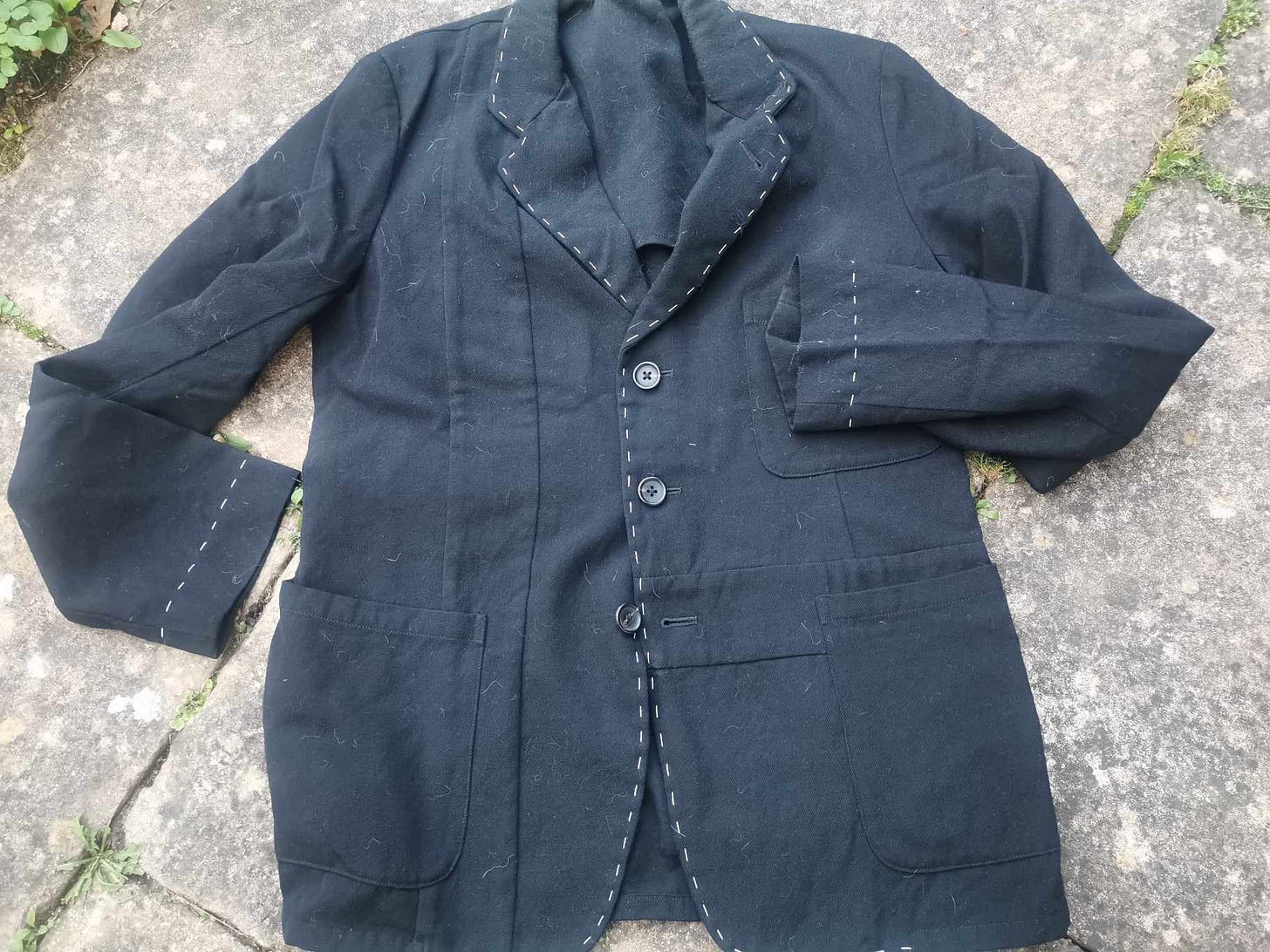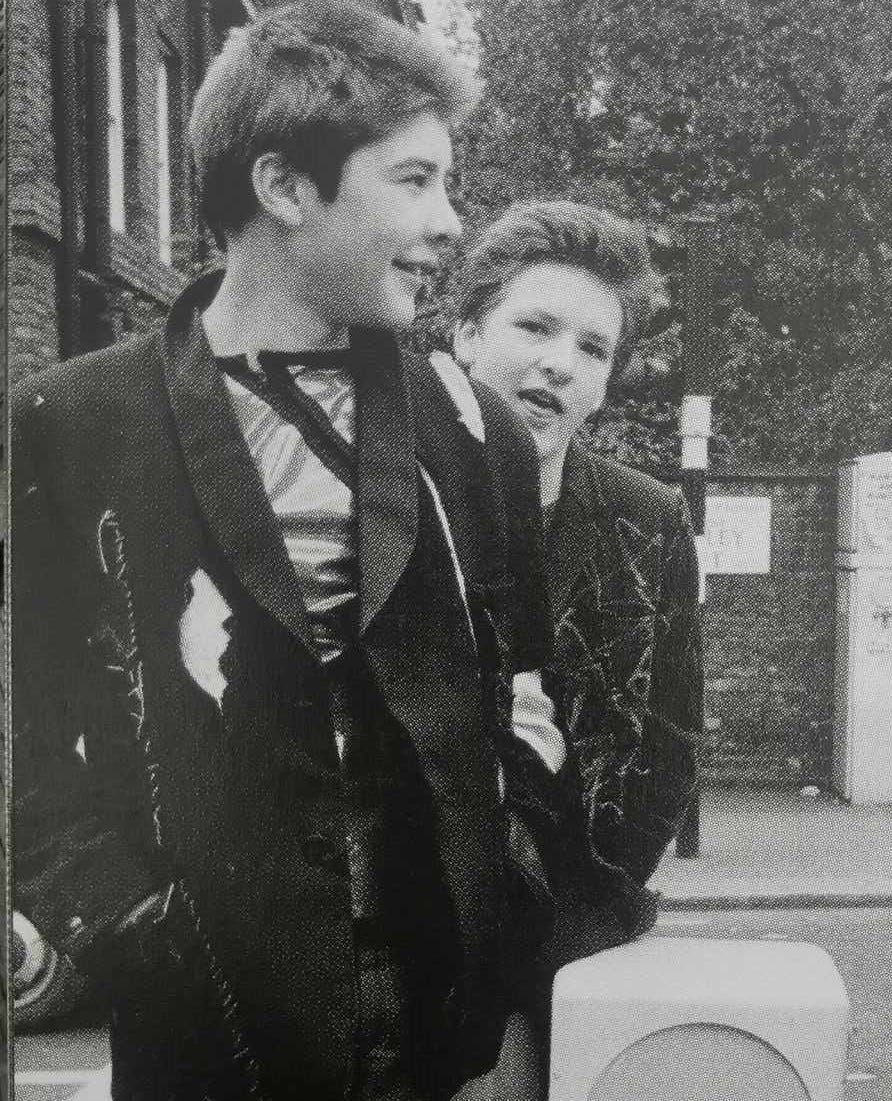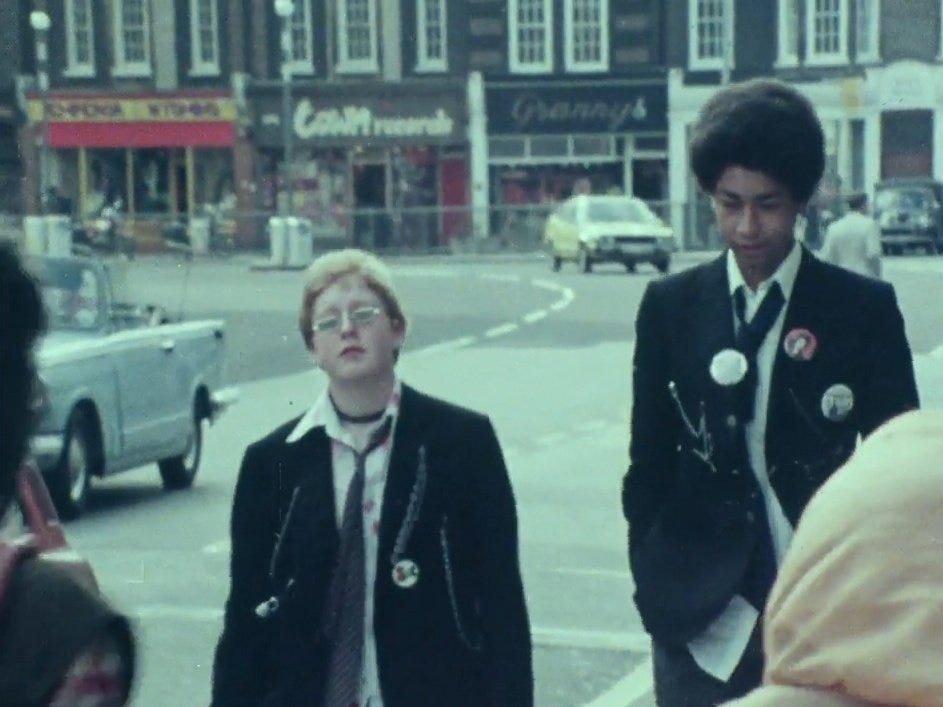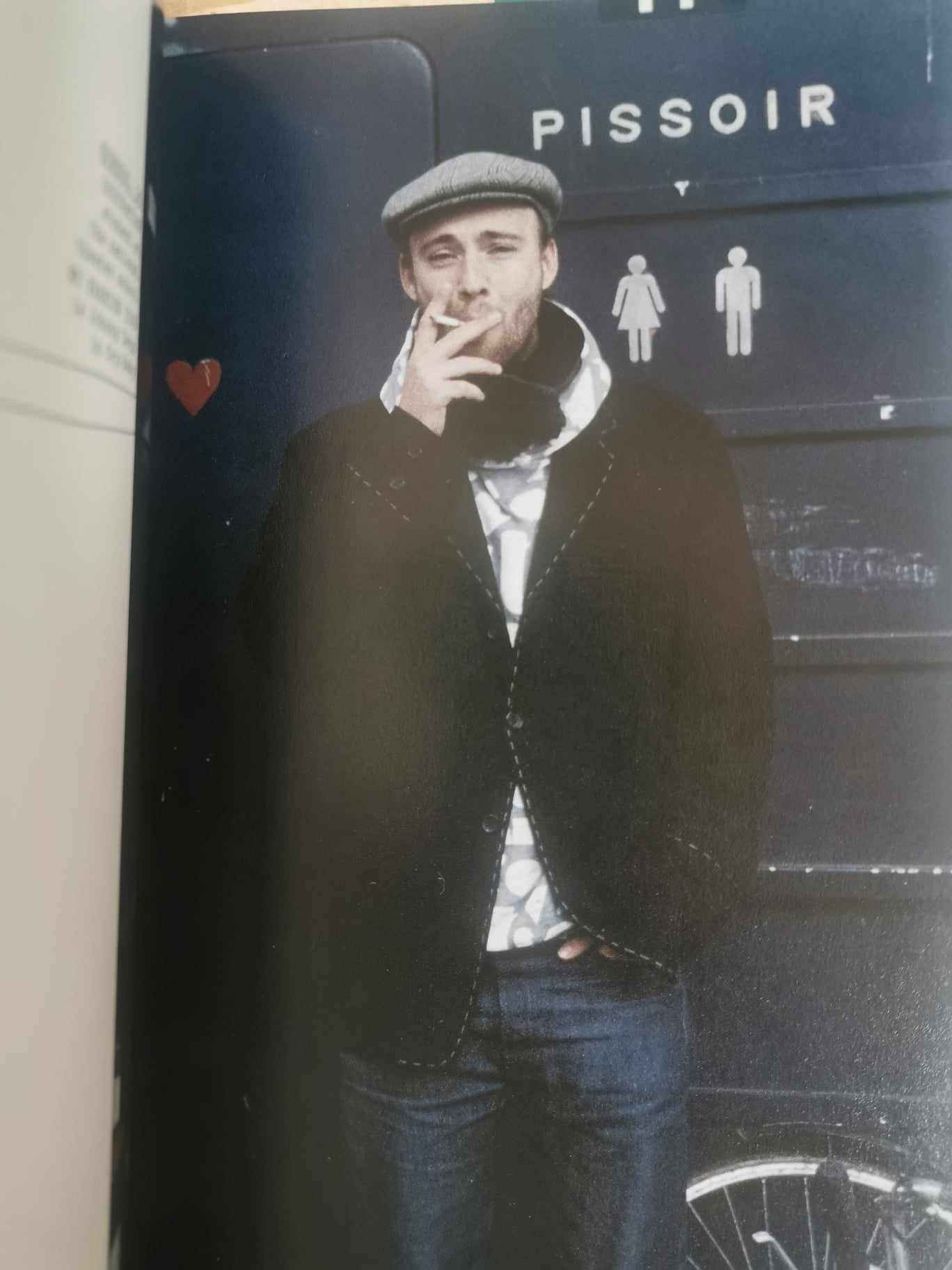A few posts back I started to share my thoughts and dredged memories of a winter 2004 visit to Barnsley and a chance encounter with the shop Pollyanna which changed the direction of my life. As well as the Junya Watanabe workwear coat which formed the jumping off point of the earlier essay I also purchased a Yohji Yamamoto blazer. The jacket still survives, as seen below, with a bit of cat hair from the late and much-missed Nancy.
This jacket, and the wherewithal of its purchase, will supply ammunition to this second essay which brings in a bit of fashion history from various decades and also addresses my own personal missing 90s. I know I promised to do that in the previous post, but I got distracted and wrote a long slew on Barnsley itself. Also, I realise that there seems to be a current trend for revisiting 90s fashion in present-day high-end fashion, but I don’t feel confident or qualified (at this point in time) to add my thoughts to that shift. Maybe later. For now, we will see a very unfashionable 90s in this essay.
So, the Yohji Yamamoto blazer nestled in the concrete warehouse sale at Pollyanna. Like the Watanabe workcoat, this was also drastically reduced in price. The blazer is made from rough black wool and is asymmetrically constructed and compiled with perpendicular fabric bands. It is symmetrical in shape, but the montaging of fabric and seams radically differ from one side to the other. In line with the philosophy of both exposing structure and incomplete processes (sometimes over-simplistically attributed as deconstruction), the garment has extant tailor’s stitching in white cotton along the button line and collar, plus an intricate stratigraphic interior. The fit is not as relaxed and forgiving as the previous Yamamoto jacket I wrote about, invoking the spirit of Tony Wilson etc.
It is designed such that it can be worn inside-out, with a trio of small, buttoned pockets with envelope-flap closures, visible small buttons as the reverse anchor of the main buttons to close the jacket, and the arms finished in silk black/blue pinstripes. This inside-out alternative evokes the punkish minor act of resistance applied to school blazers in the late 1970s. There are a few often-reproduced photographs of early makeshift punk vernacular with kids who can’t afford the prices of 430 Kings Road making do with a ripped and pinned school blazers. If you ripped and pinned your school blazer you’d be for the high-jump, so a quick change to inside-out often sufficed as a subversive act. The ripped and torn style now seems to be a go-to look when a contemporary drama tries to recreate this period of UK subculture – such as with the character played by Elle Fanning in the 2017 sci-fi-rom-com (there is such a thing apparently???) How to Talk to Girls at Parties.

Another minor point about this jacket. You normally feel a small tinge of authenticity with such a purchase, even though every garment has been produced if not in mass then in a discrete number of multiples (you presume). But you don’t expect to see the jacket anywhere else, since Pollyanna – one of the only stockists of Yamamoto in the north – tended to buy in very small numbers. So, it was odd to encounter this very same jacket in a fashion book called Street – The Nylon Book of Global Style (2006).
The photograph depicts 26-year-old theatre student Sophus in Copenhagen teaming up the blazer with a more streetwear assemblage of hoodie, scarf, and flat cap. He is drawing on a fag and posed outside a portable toilet and upturned bikes – this must be his theatrical mise-en-scene. His considerable advantage of youth (compared to my advanced years) certainly brings the jacket to life.
While Watanabe’s workwear coat connected back to a time – the early 1980s – when clothing and fashion was important to me, the Yamamoto blazer signalled a style lacuna and fashion hiatus. I’ve already brought Yamamoto into the conversation with my essay about another jacket and the hauntological murkiness of Leeds. Things got out of order, and I should have held back on posting that essay, but never mind. However, I will give a fuller background to the designer in this essay.
I’m keeping these segments a bit shorter, and will move forward in part 2 with a discussion on Yamamoto and Comme’s gradual insertion into UK style culture and fashion. Then I will return to the absent 90s for the final part.
If you are new to this blog, the first ‘Barnsley Pollyanna’ essay (in 3 parts) can be read here
And the first mention of Yohji Yamamoto can be read here









